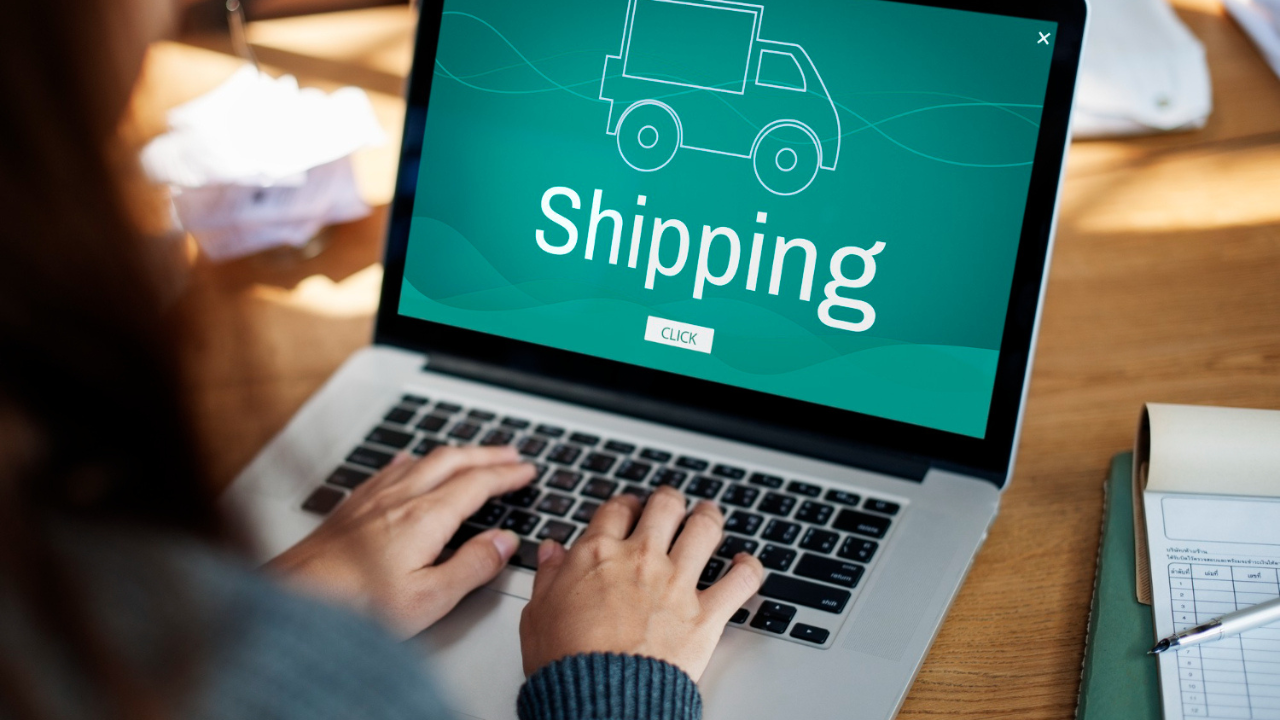Table Of Contents
- ECommerce Shipping Essentials
- 1. Comprehensive Shipping Strategy
- 2. Set Clear Shipping Policies
- 3. Smart Carrier Selection And Integration
- 4. Offer Multiple Shipping Options
- 5. Packaging: More Than A Box
- 6. Automated Fulfillment Systems
- 7. Returns & Reverse Logistics
- 8. Transparent Customer Communication
- 9. Data-Driven Shipping Optimization
- Good Shipping = More Sales
Top Shipping Essentials To Get Right With An E-commerce Store
Shipping is one of the most overlooked aspects of running an e-commerce store. You can have great products and clean marketing, but if your shipping process breaks down, customers won’t come back.
High delivery costs, delays, and vague tracking updates can all ruin trust. People expect fast, affordable, clear shipping options, and good packaging.
So, what are the ecommerce shipping essentials? Let’s decode.
ECommerce Shipping Essentials
You don’t need perfection. But you do need a system that works. If your shipping is clean and predictable, the rest of your store will benefit. In this article, we will go over several essentials to get right when it comes to shipping.
1. Comprehensive Shipping Strategy
Your shipping strategy needs to blend flexibility, affordability, and speed. It’s not a one-size-fits-all solution—your target market, location, and product type all play a role in what is best.
Options to Offer:
- Standard Shipping (3–7 days)
- Express Shipping (1–3 days)
- Same-Day / Next-Day Delivery
- Scheduled Delivery (allow customers to choose a date/time)
- Click and Collect (BOPIS) for local orders
- Local delivery through bike couriers or apps such as Dunzo, Roadie
- Free Shipping over a threshold (e.g., free above ₹999/\\$50)
International Shipping Essentials:
- Select cross-border-friendly platforms (e.g., EasyShip, Shiprocket X, BorderGuru)
- Investigate taxes and duties in key markets
- Provide DDP (Delivery Duties Paid) to minimize customer friction
- Make international shipping rates transparent before checkout
Shipping Zones & Rate Tables:
- Charge varying rates based on zones, weight, and product categories.
- Illustration: Zone A (local metro) = ₹40, Zone B (tier-2 cities) = ₹60, etc.
2. Set Clear Shipping Policies
Clear shipping policies prevent confusion and reduce complaints. If your delivery terms are vague, people will make their own assumptions. That leads to disappointment.
You need to spell out how long processing takes, how long shipping takes, and what happens if there’s a delay. Don’t hide this information. Place it where people expect to find it, which is on product pages, in the cart, and during checkout.
Processing time is different from shipping time. If it takes three days to prepare the order and four more to deliver it, the customer should know they’ll wait a week.
If you just write “ships in 3–5 days,” they may believe it will arrive by then. That gap between what they expect and what they get causes frustration.
3. Smart Carrier Selection And Integration
The ideal courier partners can influence speed, price, and satisfaction exponentially.
Multiple Carrier Strategy:
Employ a multi-carrier strategy rather than using a single provider.
- For domestic: Delhivery, Bluedart, XpressBees, DTDC, USPS, FedEx
- For international: DHL Express, Aramex, UPS, ePostGlobal
- For large/heavy products: Freight providers such as FedEx Freight or ShipBob Freight
Utilize software such as:
- ShipStation
- ShippyPro
- AfterShip
- Zoho Inventory
- ClickPost (India-based)
These tools allow you to compare rates in real time, print labels, and push tracking updates to customers automatically.
4. Offer Multiple Shipping Options
Offering more than one shipping option gives your customers control. Some want the lowest cost, even if it means waiting longer. Others are willing to pay more to get their order fast. If you only offer one method, you risk losing both types.
A slow standard option without an upgrade path can push someone to abandon their cart. The opposite is also true. High-speed delivery with no budget choice can scare off people who don’t need their item quickly.
Keep in mind that rates and delivery times vary by region. Couriers New York may perform differently than those in small towns or rural areas. Don’t promise speed you can’t control.
Use your shipping software to give real delivery estimates based on zip code and method. Let the customer see these before paying.
That way, they know what to expect, and you avoid support tickets about shipping delays. Giving people options makes checkout smoother and reduces friction.
5. Packaging: More Than A Box
Your packaging is a branding opportunity and a logistics decision.
Functional Packaging:
- Right-size packaging to lower shipping weight and save on costs
- Add fragile tags to breakables
- Use poly mailers on clothing to minimize weight
- Vacuum seal large items to minimize dimensional weight
Branded and Sustainable Packaging:
- Add brand elements: logo boxes, personalized tissue, or sustainable filler
- Be plastic-free (cardboard boxes, paper-based tapes)
- Emphasize your eco-efforts in email and packaging insert
Example: “This package is 100% recyclable and printed with soy-based ink.”
6. Automated Fulfillment Systems
Quick Fulfillment = satisfied customers.
In-House Fulfillment Tips:
- Use barcode scanning to prevent shipping mistakes
- Prepackage bestsellers during slow periods
- Establish cut-off times for same-day shipping (e.g., 2 PM)
Outsourced Fulfillment (3PLs):
Utilize 3PLs when:
- You’re growing quickly
- You need to reach multiple regions in a hurry
- You need to keep warehouse expenses low
Popular 3PLs:
- ShipBob (US, global)
- Pickrr, WareIQ (India)
- Amazon FBA (best for Prime visibility)
- Flowspace, Red Stag, Radial
Ask these questions before choosing:
- What are their SLAs (service level agreements)?
- Do they integrate with your platform (Shopify, WooCommerce)?
- Do they offer return processing?
7. Returns & Reverse Logistics
Returns are inevitable in ecommerce shipping —make them painless. You need a return process that fits your shipping setup.
Even if your products rarely come back, returns will happen. Packages get damaged. Shirts arrive in the wrong size. Sometimes people just change their minds.
If your return process is slow, confusing, or expensive, that reflects poorly on your store. It can also turn one mistake into a lost customer.
Decide first whether you’ll include a return label in the package or create a digital system. Some sellers use return portals, where customers can enter their order number and print a label themselves. This keeps the process simple and saves time.
Clear Return Policies:
- Display the return policy before checkout
- Enumerate accepted conditions (tags intact, 30 days, etc.)
- Provide simple return tracking
Hassle-Free Process:
- Provide a prepaid return label
- Utilize software such as Loop, Returnly, Happy Returns, or AfterShip Returns
- Automate refund notices and restock tracking
Bonus Tip: Provide “keep the item” refunds for low-value returns—it costs less to send back.
8. Transparent Customer Communication
Nothing annoys customers more than ambiguous delivery times.
Update Customers in Real-Time:
- Confirmation email
- ECommerce shipping email with tracking information
- Out for delivery notice
- Delivered confirmation
- Delay notifications, if any
Use Live Order Tracking Tools:
- Tracktor (Shopify)
- Narvar
- AfterShip
- Route (includes visual maps)
This minimizes “Where is my order?” (WISMO) calls and trust-building.
9. Data-Driven Shipping Optimization
Track and optimize your shipping process through data.
Metrics to Track:
- Shipping cost per order
- Average delivery time by zone
- On-time delivery percentage
- Return percentage by courier
- Damage percentage per SKU
A/B Test Your Offers:
- Free shipping vs flat rate
- Speedier courier vs lower-cost courier
- Eco-packaging vs regular
Make data-driven decisions to balance cost control and customer delight.
Good Shipping = More Sales
In a day and age where Amazon Prime has set customer expectations so high, eCommerce shipping no longer has to be an afterthought—it’s your secret weapon.
When you have these basics down:
- A considerate and adaptability-based shipping approach
- Intelligent packaging and fulfillment processes
- Streamlined customer communication and returns
…you’re not simply shipping goods—you’re delivering satisfaction, loyalty, and repeat business.














